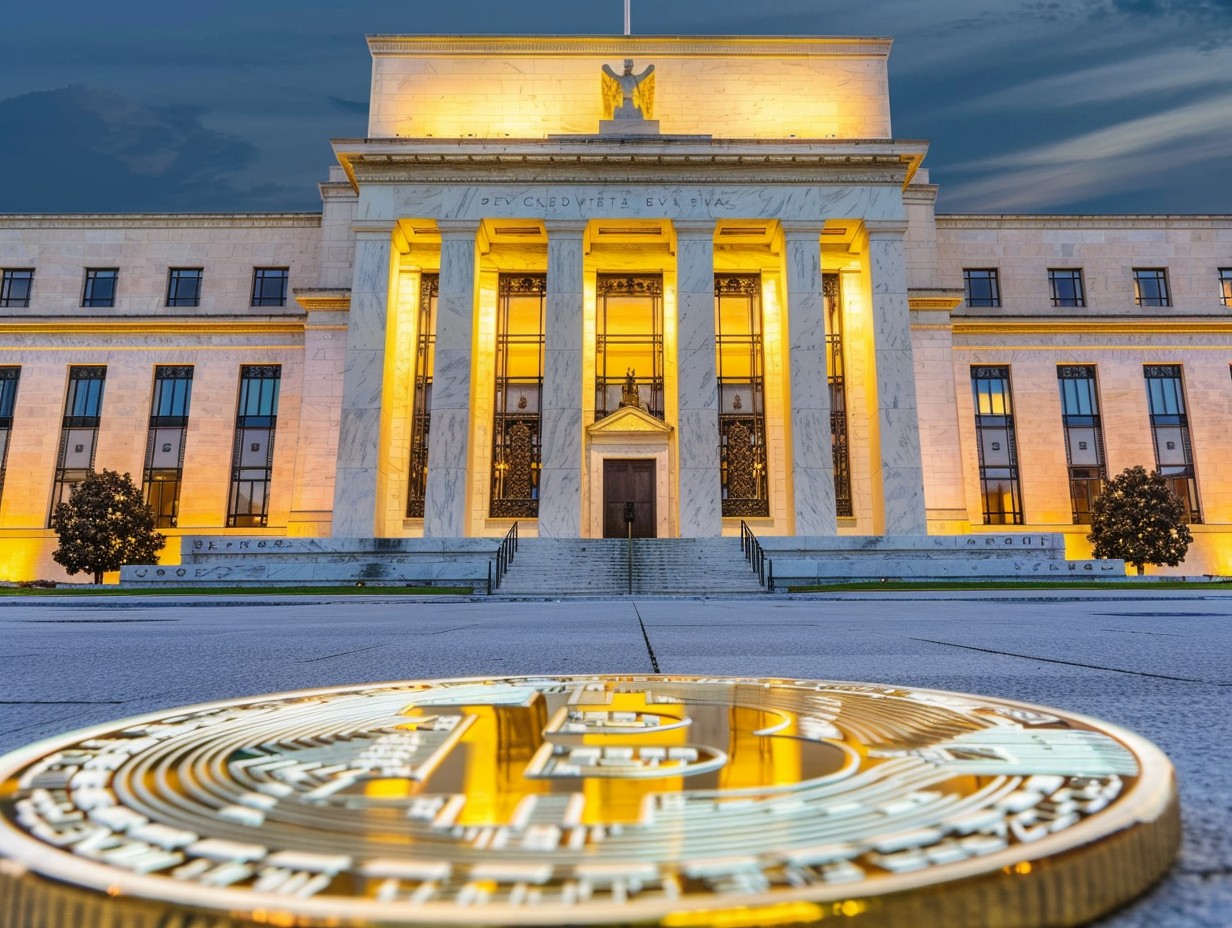The Bitcoin market has been experiencing a period of correction, signaling a potential shift in the cryptocurrency’s value. This correction phase is gaining momentum, prompting investors and analysts to closely monitor the market’s behavior and identify possible contributing factors.
Additionally, the imminent outlook of the Federal Reserve’s interest rates adds another layer of complexity to the situation, as it has the potential to influence the crypto market and the broader financial landscape.
Bitcoin price is in Fed trouble
It’s the weekend, and Bitcoin has fallen casualty due to the negative weekend sentiment. Today, Bitcoin (BTC) is valued at $67,038.34, representing a decrease of 1.5% since yesterday and 0.4% from one hour ago. In comparison to seven days ago, the value of BTC is 4.1% lower today. The fear and Greed Index for Bitcoin is also 79, which indicates extreme greed.
Bitcoin Fear and Greed Index is 79 — Extreme Greed
— Bitcoin Fear and Greed Index (@BitcoinFear) March 17, 2024
Current price: $66,971 pic.twitter.com/iYBA9MCDKt
Current crypto market cap stands at $2.64 trillion, representing a 117.81% year-over-year and a -2.99% change over the previous twenty-four hours. Currently, BTC holds a market cap of $1.31 trillion, which signifies a 49.39% market share. At $149 billion, stablecoins represent a 5.63 percent portion of the total crypto market cap.
At the March Federal Reserve of the United States meeting, interest rates will likely remain unchanged. However, rate decreases are predicted in 2024, and the market will seek hints about when they will occur.
The Federal Open Market Committee will convene from March 19 to 20 and announce the target Federal Funds rate on March 20 at 2 p.m. ET. The current target range is 5.25% to 5.5%, which is not likely to change.
Then, at 2:30 p.m. ET, Federal Reserve Chair Jerome Powell will host a press conference to provide additional background and answer questions. Additionally, officials will update their Summary of Economic Projections. This includes a collection of estimates, sometimes referred to as a dot plot, that estimate where rates will be at the end of 2024. On April 10, the Fed is anticipated to issue the March meeting minutes.
All of this will be closely monitored by fixed-income markets. According to the CME FedWatch Tool, interest rate decreases are currently expected to begin in June or July, with three or four occurring in 2024.
Michelle Bowman, a Fed Board of Governors member, lately expressed more hawkish views. “Should the incoming data continue to indicate that inflation is moving sustainably toward our 2 percent goal, it will eventually become appropriate to gradually lower our policy rate to prevent monetary policy from becoming overly restrictive,” Bowman said in a speech on March 7.
He added, “In my view, we are not yet at that point. Reducing our policy rate too soon could result in requiring further future policy rate increases to return inflation to 2 percent over the longer run.”
Inflation trends data and effect on Bitcoin
Inflation has fallen from its high, but it remains below the Fed’s 2% annual target. The most recent February Consumer Price Index report indicated an annual inflation rate of 3.2%. The Fed frequently favors the Personal Consumption Expenditures Price Index, which reported annual inflation of 2.4% in January.
The PCE index for February will be revised on March 29, following the Fed’s meeting on the 20th. One source of concern is that, despite inflation having slowed significantly since its peak, current data suggests that inflation may accelerate slightly by early 2024.
For example, CPI inflation increased by 0.3% monthly in January and 0.4% in February. Both levels are higher than in the previous 12 months. To attain its 2% target, the Fed would need to see monthly inflation of roughly 0.1% to 0.2%. Nonetheless, inflation has fallen significantly from its high in 2022.
The Fed is monitoring the statistics and hopes to have confidence that inflation will return to its 2% target before committing to rate decreases. Current concerns about increasing inflation may be short-lived. That is because the Atlanta Fed’s CPI forecast for March suggests that inflation will be closer to 0.2%.
According to on-chain data, net inflows into the Bitcoin-spot ETF market decreased on Friday. Sending Bitcoin South. On Saturday, March 16, Bitcoin fell by 5.99%, closing at $65,437.
BTC-spot ETF market flow data from Friday (March 15) influenced buyer demand for Bitcoin.
On Friday, the BTC-spot ETF market had $338.2 million in net inflows (excluding Grayscale Bitcoin Trust (GBTC) outflows). Net inflows (excluding GBTC withdrawals) decreased from $389.8 million on Thursday (March 14) to $960.2 million on Wednesday (March 13).
From Zero to Web3 Pro: Your 90-Day Career Launch Plan
 Bitcoin
Bitcoin